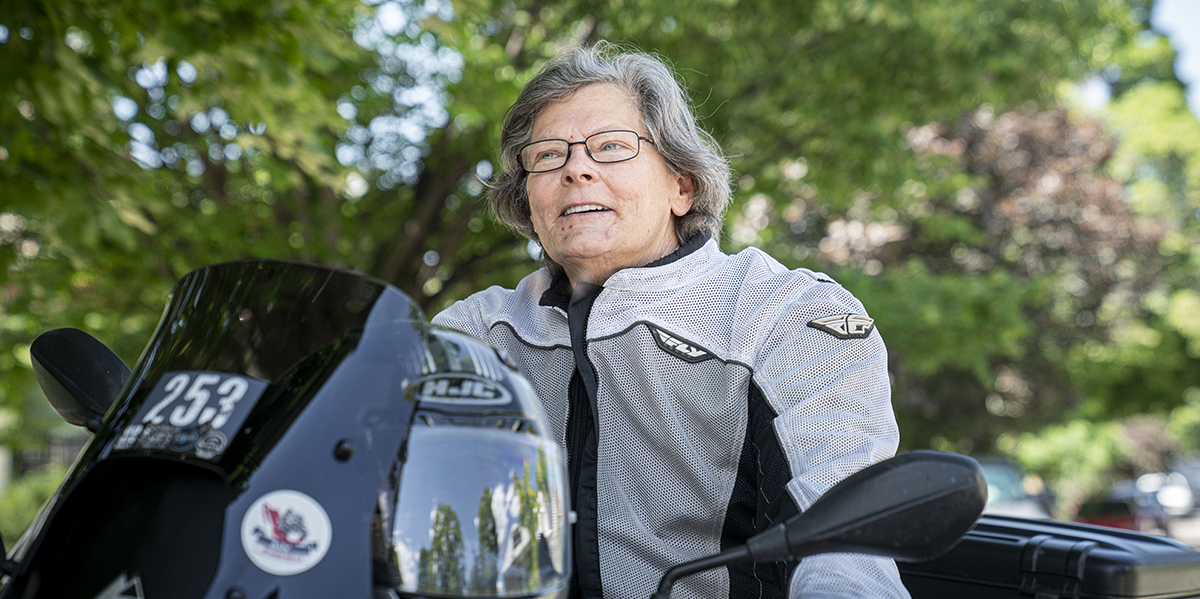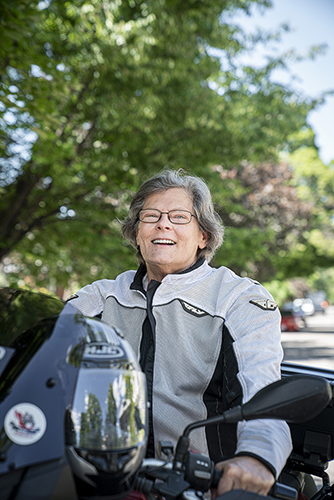Breadcrumb

Connie Collier didn’t waste any time getting back to life after breast cancer surgery.
"I was up barbecuing in three days," she says.
The 70-year-old retired VA medical support specialist and Air Force veteran doesn’t like to sit around. She’d rather spend time camping, canoeing, fishing, or—better yet—riding her motorcycle.
So when Connie needed to choose a treatment for breast cancer, she asked herself which option would let her resume her active lifestyle as soon as possible.
The total time—from the moment she had the mammogram to the day she was done with treatment—was a short three weeks. A month after that "and I was ready to ride my motorcycle again," she says.

Through regular mammograms, Connie had known for a few years that she had breast calcifications, deposits of calcium in the breast. Most of the time, breast calcifications are not a sign of cancer. But some types of calcifications need to be watched more closely. So Connie began having mammograms every six months. In spring 2020, her doctors saw a change.
"They sent me in immediately for a biopsy," she says. "Then everything moved into fast forward."
The results of the biopsy showed an aggressive form of breast cancer called invasive ductal carcinoma. Connie met with Kirstyn Brownson, MD, a breast cancer surgeon at Huntsman Cancer Institute (HCI), to discuss breast cancer surgery options—either lumpectomy, which removes the cancer while preserving as much of the breast as possible, or mastectomy, which removes the entire breast. Treatment recommendations depend on many factors, such as a person’s cancer type and stage, age, and overall health. In Connie’s case, Dr. Brownson recommended either mastectomy without radiation or lumpectomy with radiation.
Personal wants and needs also factor into treatment decisions. For Connie, it was important to get through cancer treatment quickly. And with the COVID-19 pandemic happening, coming into the hospital for weeks of radiation treatment didn’t seem ideal.
"I thought, what’s the easiest way to get back to life and do the best thing for myself?" Connie says. "So I opted for the mastectomy."
Connie describes recovering from the surgery as relatively easy compared to some of the things her body has been through.
"I’ve been beat up pretty good in motorcycle dirt riding mishaps. So it’s like, this was a piece of cake. I never suffered any serious pain or agony. I healed well. And Dr. Brownson left me with a really pretty scar," she laughs.
Connie says she understands many women with breast cancer want to keep their breast if possible, but that wasn’t a major concern for her.
"I guess I’m just a different kind of person, which is okay," she says. "I have a couple friends who have had lumpectomies. It’s a personal choice."
Dr. Brownson emphasizes that even though a cancer diagnosis can leave patients feeling out of control, they should know they have options and have a say in their treatment decisions.
"Empowering our patients is a really rewarding and critical part of our jobs as cancer care providers," she says. "It is essential to get to know our patients and to understand their wants and needs so that we can individualize their cancer care plan."
Connie’s advice: "Weigh all your options and don’t just think of the [treatment] itself. Think of the whole picture. You’ve got to figure out what’s important to you."